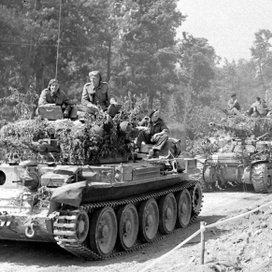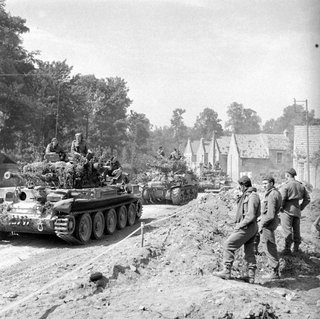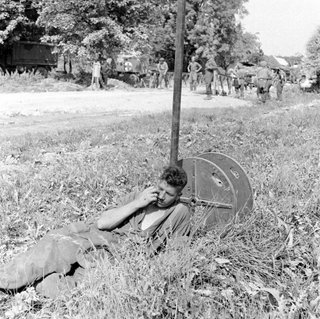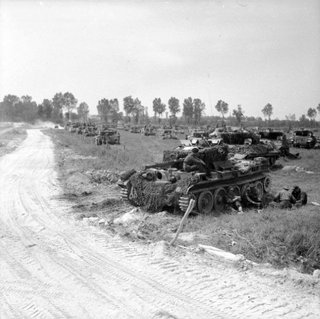THE OPERATION GOODWOOD
From 18 to 20 July 1944 | Five weeks after the Normandy landings, on 6 June 1944, under the command of Bernard Montgomery, the Allies launched a major attack to liberate the city of Caen. Codenamed Goodwood, it was the greatest Allied operation on the Western European front.
Accompanied by columns of Armoured vehicles, the Allied troops slowly advanced towards Caen. Notably via the Bailey Bridges, passing through Bénouville.
At the end of the operation, 3,600 Allied troops and 469 tanks were put out of action. However, despite the poor reports, General Montgomery displayed his satisfaction. The Germans, having sent many tanks southeast of Caen, allowed the American Forces in the west to progress southwards over the following days…
However, until Operation Goodwood, Hitler had remained convinced that a larger invasion force was landing in Pas-de-Calais, northern France.
After Goodwood, he redirected the 250,000 men of his Fifteenth Army to Normandy. Fortunately, the German reinforcements arrived too late to prevent the Allies’ breakthrough.
Two Cromwell tanks and a Sherman Firefly tank of the 1st Royal Tank Regiment, 7th British Armoured Division, rue du Grand Clos, Bénouville during Operation Goodwood. They are about to cross the River Orne on the Bailey Bridge named "London Bridge 1". © LIFE Magazine, photo : George Rodger.
At the southern end of the town of Bénouville, between the "Pegasus" bridge and "London Bridge 1" on the Caen Canal, a British sapper takes a few minutes' respite from the summer heat. In the background, other sappers carry the parts of a Bailey bridge. © LIFE Magazine, photo : George Rodger.
Cromwell tanks of the 7th British Armoured Division, accompanied by M10 Achilles tank fighters of the 65th Anti-Tank Regiment, assemble in column to the south-west of Bénouville in platoons, after crossing the Bailey Bridge named "London Bridge 1”. © IWM, B 7647



